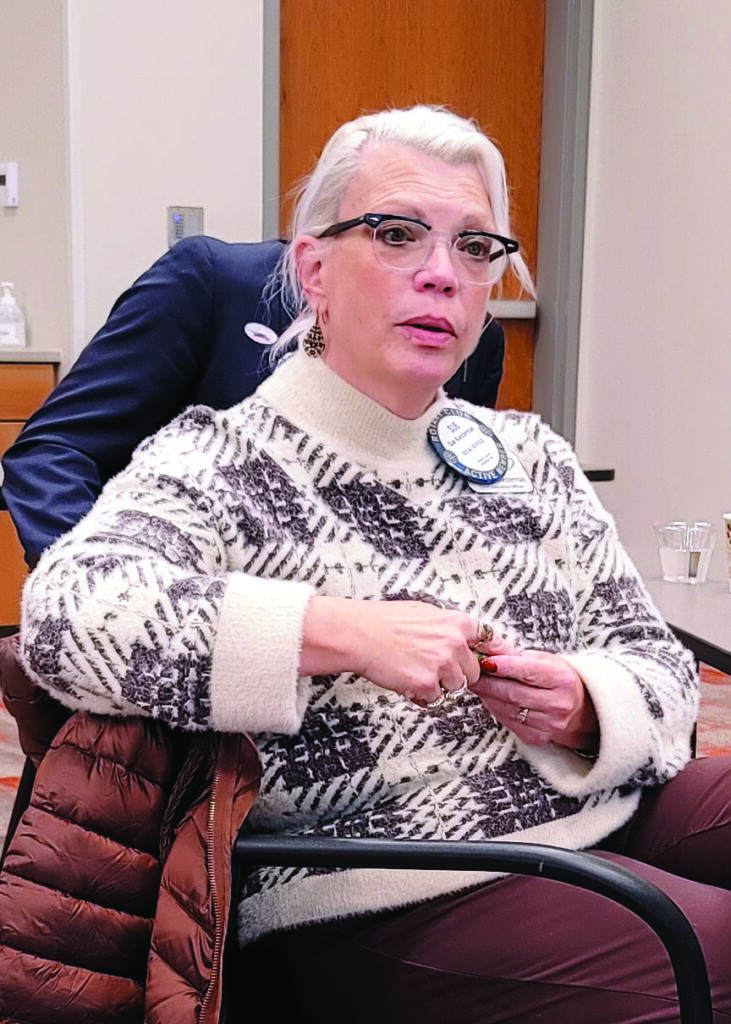
Rev. Sue Koesterman is asking “a lot to give a little” to help Churches United for the Homeless. (Photo/Nancy Hanson.)
Nancy Edmonds Hanson
Raising funds to pay the way for Moorhead and Fargo’s four shelters for homeless men, women and children is a perennial challenge. But this year, says executive director Sue Koesterman, the squeeze is particularly acute.
“We have received some major grants this year,” Koesterman acknowledges, including $4 million to repair and renew the headquarters of Churches United for the Homeless. “But not one cent of that money can be used to pay our operating expenses.”
That means her nonprofit organization is facing dire budget woes as the year comes to a close. To fill that gap, she is looking for 5,000 people willing to donate just $100 in coming months. “Historically, Churches United has had a very broad base of donors. We think the best way to make up lost ground is to challenge a lot of people to do a little. We’ll never turn down larger gifts, of course, but this campaign plays to our strengths. If everybody does a little bit, that will take us a long, long way.”
The nonprofit, established 35 years ago by a group of local congregations, employs 72 staff members, most of them working around the clock in the four shelters Churches United now operates. In addition to Micah’s Mission, its main shelter on First Avenue North, they work at the Dorothy Day House on Eighth Street South, Safe Haven on 30th Avenue South, and Bright Sky Apartments on Third Avenue North. Together, they have a maximum capacity of 150 beds. The organization also runs two food programs, the Dorothy Day Emergency Food Pantries in Moorhead and West Fargo.
The same economic issues that affect the entire job market have caused budget woes, Koesterman says. “Like other organizations like us, we have had to raise wages and benefits to retain qualified staff,” she explains. “When you operate shelters, you can’t just cut back your hours. It’s a 24/7/365 responsibility.” Lingering staff shortages led to excess overtime as current employees were asked to take on extra shifts. The shortages were so significant that female residents were moved from Safe Haven to the main shelter earlier this fall; new hires finally enabled their return to the facility (which houses homeless women without children) on Tuesday.
The numbers of those who need shelter continues to rise, she notes. At the same time, her facilities’ energy bills have also risen 67% over 2021.
Too, the pandemic meant losing the services of volunteers who have always helped with serving meals and other services for the shelters’ residents. They have begun to return since precautions were lifted earlier this year, the director says. However, their numbers are still far slimmer than before Covid-19.
Yet the need is growing, as it has almost every year. Koesterman cites evidence provided by the traffic at the two emergency food pantries. “We had distributed 2 million pounds of food as of the end of October,” she reports. That almost equals the entire year of 2021 … and demand is usually highest in November and December.
“That tells us the needs of our neighbors continue to be very pressing,” she says. “When money is tight, they spend what they have on food, and that sometimes leads to not being able to keep up with other bills, like the rent. That’s why nutritional support for households under great stress helps us reduce homelessness. It allows some families to pay the rent ad stay stably housed.”
Supporters can find a donation link of Churches United’s website, https://www.churches-united.org/. The link is also posted on its Facebook page.


